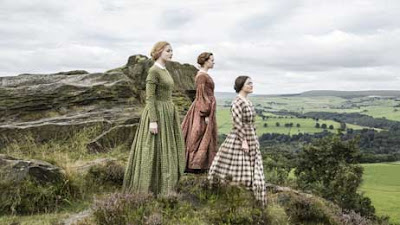A new translation edited by
Maddalena De Leo
Under the title of Juvenilia, published by Robin Edizioni
La Biblioteca del Vascello, four engaging tales by a young Charlotte Brontë can
be found. Two of them are very long - almost short novels. They allow the reader
to open a window on the immature writing of the extraordinary English author,
which is already of great strength and passion.
In 2016 the well-known Italian
scholar edited two Brontë translation texts respectively for the publishers Argolibro
(Stories of Genies and Fairies) and
Ripostes (I Componimenti Brussels) to
celebrate the bicentennial of Charlotte Brontë, so this third volume completes the triad.
In particular in this book is appearing for the first
time ever in Italian, the translation of the beautiful novella Caroline Vernon
accompanied with three other exciting stories from Angria: Lily Hart, another unpublished one, The Secret and Henry Hastings,
already published in the past in De Leo’s translation but now out of print and
therefore unavailable in Italy. All four texts are accompanied by a broad and
comprehensive introduction.
Caroline
Vernon is the last story belonging to Angria saga and the one that demarcates
the transition from the early writings to the artistic maturity of Charlotte
Brontë. Divided into two parts, the long tale follows the story of the young natural daughter of the Count of Northangerland
who, from the segregated, quiet country life she leads with her mother,
suddenly finds herself catapulted into high society and the elegant salons of Paris. The young Caroline
is then drawn in by the seductive arts of the cynical godfather, the Duke of
Zamorna, becoming his unwitting prey.
Lily Hart is on the other hand a delicious fairy tale of love set in Africa, written by Brontë in 1833, at the height of the collaboration with her brother Branwell with whom she carried on, at that time,
the military adventures of the newborn Angrian world. A secret marriage is described, that of the Duke of Fidena who falls for a girl
of a social class far inferior to his own.
If with The Secret the reader comes in contact
with a weak and frightened heroine who nevertheless does not hesitate to act in
contravention to her husband's orders and without his knowledge, in Henry Hastings instead there is the new heroine,
stubborn and irreducible in her behaviour and ideas, the one who can cope with
the temptations of love and who already anticipates the most famous and amazing
character created by the pen of Charlotte Brontë, the unforgettable Jane Eyre.









